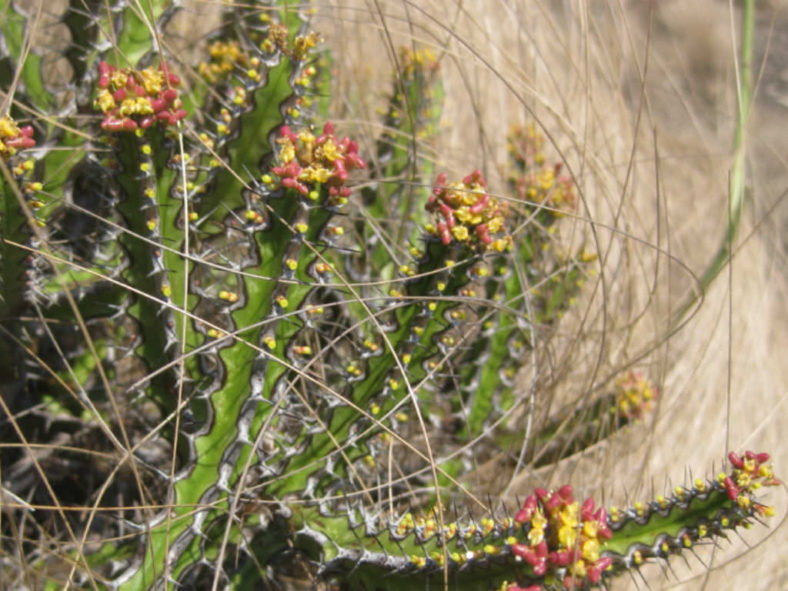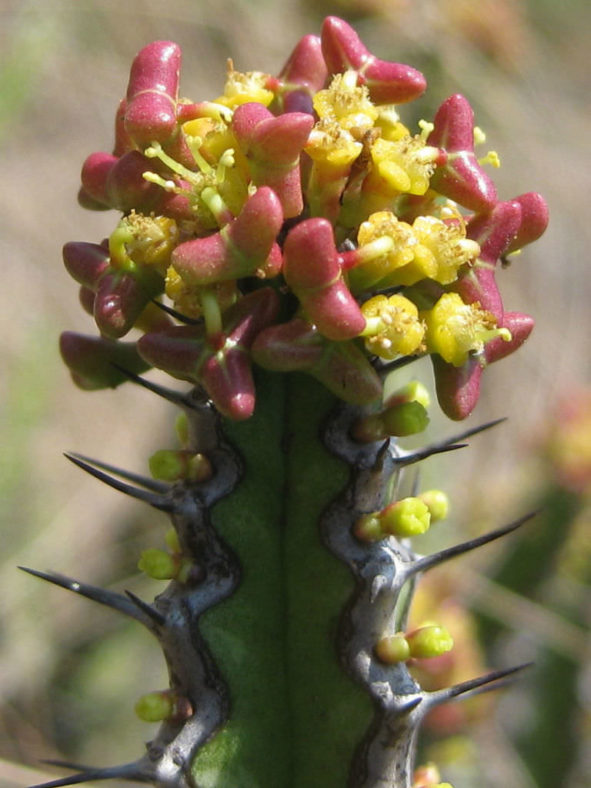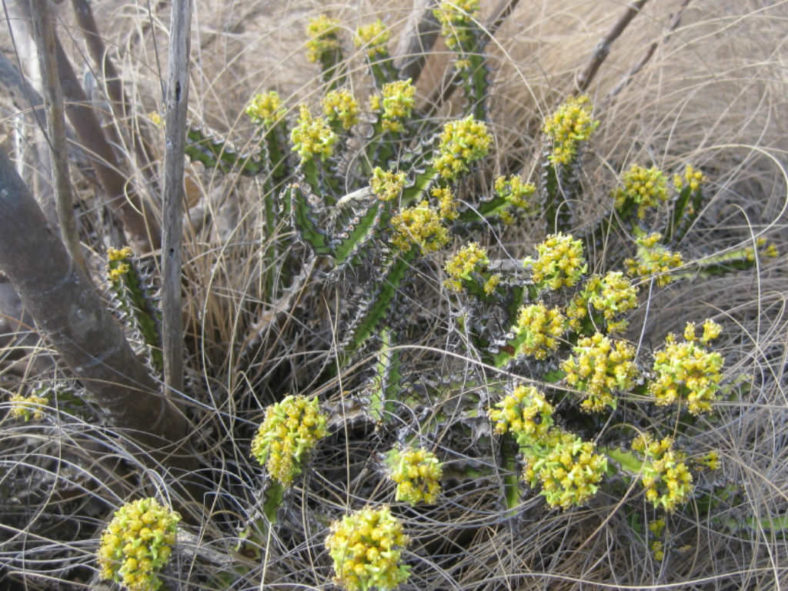Scientific Name
Euphorbia ramulosa L.C.Leach
Scientific Classification
Family: Euphorbiaceae
Subfamily: Euphorbioideae
Tribe: Euphorbieae
Subtribe: Euphorbiinae
Genus: Euphorbia
Etymology
The specific epithet "ramulosa" (pronounced "ram-yoo-LOH-suh") means "full of small branches" and refers to the branching habit of this species.
Origin
Euphorbia ramulosa is native to northern Mozambique. It grows on exposed granite slabs and domes in crevices and open woodlands.
Description
Euphorbia ramulosa is a densely branched succulent shrublet with spiny, 4-angled branches with prominent tubercles and spine shields that form a continuous horny margin along the angles. It can reach a height of 16 inches (40 cm). The branches are rigid and can grow up to 6.4 inches (17 cm) long and 0.8 inches (2 cm) thick. The tubercles are about 0.5 inches (1.3 cm) apart. The spine shields are obovate with stout, spreading spines measuring about 0.3 inches (0.8 cm) long.
The cymes are reduced to solitary cyathia with broadly funnel-shaped involucres and greenish-yellow glands. The flowering season is fall. The seed capsules are obtusely lobed with purplish angles and sutures and contain ellipsoid, greyish-brown seeds.

How to Grow and Care for Euphorbia ramulosa
Hardiness: USDA hardiness zones 10a to 11b: from 30°F (-1.1°C) to 50°F (10°C).
Euphorbias are very easy to care for. These plants require a little pampering to become established, but once they are, they are self-sufficient. More die from too much care and watering than from neglect. Euphorbias need well-draining soil and lots of sunlight. They are not particular about soil pH, but cannot tolerate wet soil. Unlike most succulents, Euphorbia does not handle long periods of drought well. It may need weekly watering during the summer. Water whenever the soil is dry several inches below the surface. Water deeply, but don't let them sit in wet soil, which can cause root rot. Add some organic matter or fertilizer to the planting hole. If you are growing them in containers or your soil is poor, feed them with a half-strength fertilizer monthly.
These succulents can be grown from seed, but they can be difficult to germinate or even find. They are usually propagated by cuttings. This can be tricky because of the exuding sap. Rooting hormone is recommended with Euphorbia. They tend to grow problem-free, but there are a few pests and diseases to be alert for.
Learn more at How to Grow and Care for Euphorbia.
Links
- Back to genus Euphorbia
- Succupedia: Browse succulents by Scientific Name, Common Name, Genus, Family, USDA Hardiness Zone, Origin, or cacti by Genus
Photo Gallery
Click on a photo to see a larger version.

